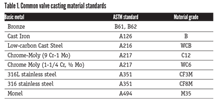NAM Monday Economic Report – November 3, 2014
The U.S. economy grew 3.5 percent at the annual rate in the third quarter, representing decent growth following the disappointing first half of 2014.
Despite the encouraging GDP data, there were a few data releases that suggested some softness in September. For instance, new durable goods orders were surprisingly down 1.3 percent. Much of that decline stemmed from lower aircraft sales—a highly volatile segment of the market in which orders are often quite choppy. Excluding transportation, new durable goods orders were off 0.2 percent, which, while somewhat more favorable, continued to reflect weakness. In addition, consumers also appear to be quite cautious. Personal spending fell 0.2 percent in September; retail sales also declined. On the positive side, durable goods orders and personal spending remain at healthy levels on a year-over-year basis, expanding 3.3 percent and 3.5 percent, respectively, over the past 12 months.
Consumers and manufacturers are also more upbeat. The Conference Board and University of Michigan reported consumer confidence levels for October that were at pre-recessionary levels. While Americans continue to have some anxieties, these appear to be outweighed by a more positive outlook. Lower gasoline prices have likely buoyed these attitudes, providing additional disposable income that could boost spending in the months ahead. Personal incomes have also trended higher, up 0.2 percent in September, with manufacturing wages and salaries rising 2.1 percent over the past year.
Meanwhile, manufacturing activity expanded in both the Dallas and Richmond Federal Reserve bank districts, and the pace of new orders picked up in each region. More importantly, manufacturers anticipate demand, production and employment to rise over the next six months, which is encouraging. Still, the sample comments in the Dallas Fed report shine a light on concerns that are top-of-mind for manufacturers. These include the ability to attract new workers, geopolitical uncertainties, the lack of transportation workers, reduced petroleum prices (for producers), rising health insurance premiums and slowing growth in Europe and China.
For its part, the Federal Open Market Committee (FOMC) ended quantitative easing as expected, citing improvements in the economy and labor markets. The question now shifts to when the Federal Reserve will begin increasing short-term interest rates. Conventional wisdom holds that increases will occur in either the second or third quarter of 2015. Officially, the FOMC statement simply says that current interest rate levels will be maintained for a “considerable time,” with the decision to begin normalizing rates hinging on economic data.
This morning, the Institute for Supply Management’s manufacturing survey should continue to reflect strong gains in new orders and output, much as it has over the past three or four months. In addition, manufactured goods exports for September hopefully will likely mirror the encouraging trade figures seen in the latest GDP report, as export growth has been sluggish so far in 2014. Of course, the largest highlight of this week will come on Friday, with the release of new employment numbers from the Bureau of Labor Statistics (BLS). While manufacturers hired just over 14,000 workers on average each month earlier in the year, the data were soft in both August and September. We would expect a return to average in October. Other highlights this week include new data on construction spending, factory orders and productivity.
Chad Moutray is the chief economist, National Association of Manufacturers
RELATED CONTENT
-
Ancient Roman Valves
The story of water supply in the ancient Roman Empire is grand.
-
The Final Control Element: Controlling Energy Transformation
When selecting control valves, be sure to properly evaluate the process conditions to identify potential issues and select the proper management techniques.
-
Which Gate Valve is Best for Today's Waterworks Systems?
A historical perspective may provide the answer.








 Unloading large gate valve.jpg;maxWidth=214)

